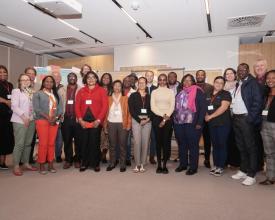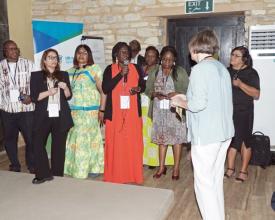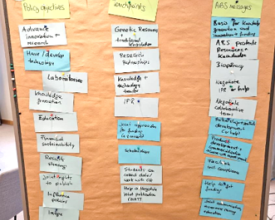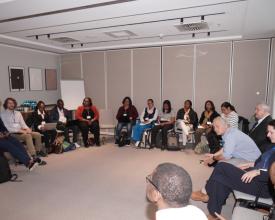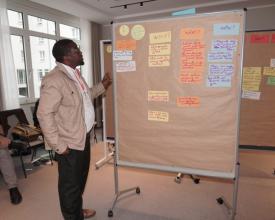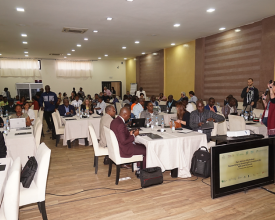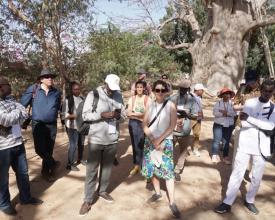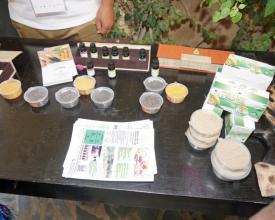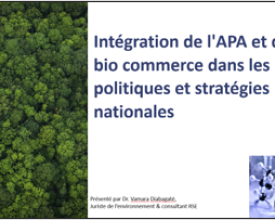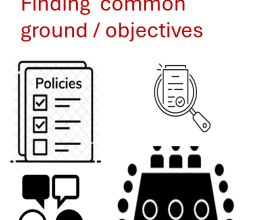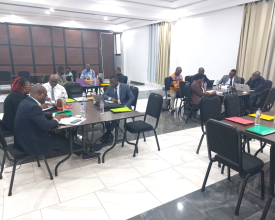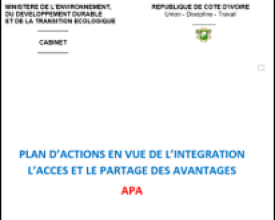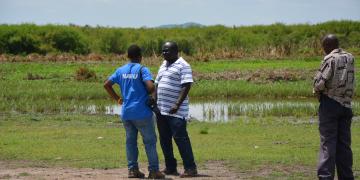Demystifying Mainstreaming of Access and Benefit Sharing (ABS)
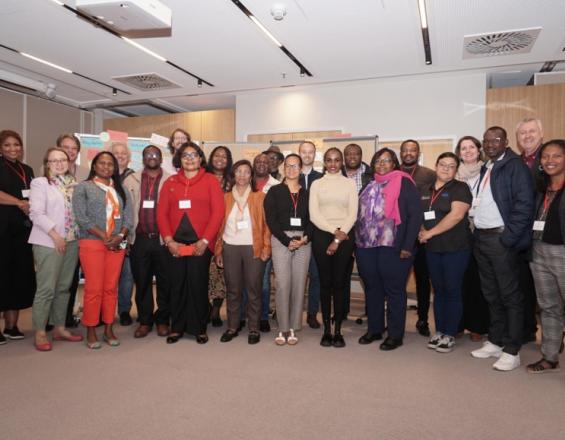
The situation is not new: a ministry is assigned responsibility for a socio-political issue but lacks the assertiveness, resources, or political backing to advance it effectively. More powerful ministries - such as those for economics, finance, or trade - often perceive the topic as marginal and economically insignificant, leading to disengagement. The responsible ministry frequently fails to recognise the broader socio-political relevance or how to engage more influential stakeholders to mainstream the topic and its implementation.
The approach to mainstreaming Access and Benefit Sharing (ABS) taken by the ABS Capacity Development Initiative (ABS Initiative) highlights solutions to overcome these challenges but also reveals their limitations. Mainstreaming can be seen as a process whereby ABS is systematically integrated into existing or future structures, laws, strategies, plans, policies and programmes of other ministries and stakeholders. However, the methods used to implement mainstreaming are of crucial importance.
Contexte
Challenges addressed
Access and Benefit-Sharing (ABS) refers to access to genetic resources and associated traditional knowledge, and the fair and equitable sharing of benefits arising from their utilisation. In line with Target 13 of the Global Biodiversity Framework (GBF), national authorities responsible for ABS are expected to facilitate a substantial increase in shared benefits by 2030.
However, many ABS Focal Points and Competent National Authorities face institutional, political, and conceptual barriers that prevent them from effectively integrate ABS. The ABS units are often small, technically focused, and disconnected from mainstream policy-making circles. Some of them lack the channels or the assertiveness to implement change. A lack of guidance, limited political leverage, and the perception of ABS as a niche issue contribute to the gap between awareness and implementation. Still, to achieve Target 13, strategic alliances with more influential ministries and other key stakeholders are essential.
Emplacement
Traiter
Summary of the process
The three building blocks form a coherent, stepwise approach to mainstreaming ABS. The process begins with actionable guidance for ABS mainstreaming (BB1) initiates the process by raising awareness among national ABS actors, mapping key sectors, and developing tailored communication strategies. This ensures clarity on priorities and entry points. Conceptual support to NBSAPs (BB2) builds on this foundation by embedding ABS in national biodiversity strategies and related policy instruments. This aligns ABS with broader development and sectoral goals and fosters a whole-of-government engagement. The country example of Côte d’Ivoire (BB3) illustrates how these approaches translate into practice through in-depth policy mapping, cross-ministerial dialogue, and integration into national development plans. Each block reinforces the others: practical guidance equips actors with methods; policy integration provides a formal framework; and the country example offers proof of concept and lessons for replication. Together, they create a cycle where strategic capacity, institutional embedding, and demonstrated results mutually strengthen ABS mainstreaming.
Building Blocks
The actionable guidance for ABS-mainstreaming
This building block aims to strengthen awareness among government agencies responsible for ABS about the need for national ABS mainstreaming, aligned with Target 13 of the Global Biodiversity Framework, and to identify effective implementation approaches. To this end, the ABS Initiative organised a two-day workshop with ABS Focal Points from seven African countries. Participants analysed challenges for ABS mainstreaming, including limited cross-sector collaboration, balancing ABS priorities with other biodiversity goals, and gaps in implementing and monitoring benefit-sharing.
Using guiding questions, participants identified priority actors, mandates, partnership anchor points, and potential mutual benefits. Countries developed practical solutions, focusing on both technical collaboration with ministries and policy-level engagement to improve the enabling environment.
Strategic communication exercises helped to tailor ABS messaging for sectors such as agriculture, research, trade, and health by linking ABS to their specific policy objectives. Each country defined two priority measures and initial steps for implementation at home. The ABS Initiative also developed country policy briefs showcasing anchor and entry points for ABS mainstreaming.
Enabling factors
A conducive learning environment, combining expert input and peer exchange, enabled participants to grasp the relevance of ABS mainstreaming and its practical application - also by broadening their understanding of ABS beyond conservation. Structured questions real-world examples and strategic communication exercises provided clear guidance helping participants to identify key actors, mandates, and sectoral linkages. This fostered a deeper understanding of how to plan and implement mainstreaming effectively.
Lesson learned
The workshop showed that ABS mainstreaming requires both technical collaboration - ministries’ approval of specific ABS agreements - and policy collaboration to establish supportive national frameworks. Countries’ varied experiences make peer exchange valuable for identifying fitting approaches. Linking ABS to other sectors’ mandates, such as trade, health, or agriculture, through shared policy goals increases receptiveness. Mapping of partnership anchor points early and defining mutual benefits helps overcome silo thinking.
Tailoring strategic communication to each sector’s priorities, proved crucial. ABS Focal Points initially thought simply explaining ABS would spark interest, but learned it is often unfamiliar or seen as niche, making tailored messaging essential. As policy and legislative development often outlast project timelines, a project’s influence is limited. Finally, focusing on a few high-priority measures with clear first steps supports follow-up and tangible progress in mainstreaming ABS nationally.
Fostering the integration of ABS into National Biodiversity Strategy and Action Plans (NBSAP)
This building block supports the integration of ABS and biotrade into National Biodiversity Strategies and Action Plans (NBSAPs), aligning them with the Global Biodiversity Framework - particularly Target 13 - and fostering synergies with other instruments, such as the International Treaty on Plant Genetic Resources for Food and Agriculture.
ABS mainstreaming involves embedding ABS into policies and plans across sectors such as trade, agriculture, health, finance, and research, rather than limiting its implementation to conservation authorities. At the 13th Pan-African ABS and Biotrade Workshop, participants discussed challenges, including limited funding, complex regulations, and insufficient involvement of non-environmental ministries. They explored Whole-of-Government and Whole-of-Society approaches, with a strong focus on private sector engagement in valorisation to generate socio-economic benefits.
Country examples, such as Uganda’s multisectoral working group involving local authorities, NGOs, IPLCs, and businesses, showed how early stakeholder mapping, integration into national development plans, and cross-sector collaboration can make ABS integration into NBSAPs more practical, inclusive, and impactful.
Enabling factors
Success was supported by an interactive format combining expert inputs, panel discussions, and concrete country cases. Contributions from organisations such as FAO and UNEP broadened perspectives. Building on outcomes from a previous workshop ensured continuity, while structured guiding questions helped participants identify challenges, and to align ABS with other instruments, (such as the International Treaty on Plant Genetic Resources for Food and Agriculture) and define practical steps for mainstreaming in their national contexts.
Lesson learned
Mainstreaming ABS into NBSAPs is most effective when positioned as both a conservation tool and an economic opportunity. Workshop discussions showed that broader stakeholder involvement is essential: it goes beyond ministries for environment or conservation and includes sectors such as trade, agriculture, health, finance, research, and users such as the private sector and research institutions.
Synergies with the International Treaty on Plant Genetic Resources for Food and Agriculture can strengthen coherence and align benefit-sharing across instruments. Early stakeholder mapping involving local authorities, IPLCs, NGOs, and businesses builds ownership and helps address monitoring and data gaps.
Valorisation strategies, industry-wide agreements, and Whole-of-Government and Whole-of-Society approaches ensure ABS is embedded in business models, policy frameworks, and community initiatives, creating sustainable value chains and fostering long-term ABS integration.
A country example of successful mainstreaming of ABS: the Côte d’Ivoire
To support national ABS mainstreaming in Côte d’Ivoire, the ABS Initiative commissioned a comprehensive study on laws, policies, strategies, and activities that could be aligned with ABS. The study analysed institutional and procedural entry points and identified key actors within ministries and institutions to drive integration. It focused on ministries covering the economy, trade, health, science, agriculture, rural development, and intellectual property, as well as national development policies, SDG implementation, and the National Biodiversity Strategy and Action Plan (NBSAP).
The research combined targeted keyword searches (e.g. “biodiversity”) with interviews across ministries. Findings were validated by experts and shared with ministry and academic representatives at a workshop, where the ABS Focal Point and participants developed around 30 joint goals and actions.
Building on subsequent activities and networks - for example based on the national NBSAP process - Côte d’Ivoire’s ABS mainstreaming shows early success: ABS is included in the revised National Development Plan, and agreements are in place to integrate it into research institute curricula and forthcoming ministry policies.
Enabling factors
Key factors in the initial success of ABS mainstreaming included:
- exchanges with the national ABS Focal Point on the importance, form, and target groups of mainstreaming;
- an in-depth stocktaking study including interviews with potential partner ministries;
- a stakeholder workshop producing a joint target and action plan; and
- leveraging national processes and contacts to advance its implementation.
Lesson learned
The process yielded two important lessons. Firstly, the ABS Focal Point and project team initially had different understandings of what mainstreaming entails, where it can be applied, and with which partners. Constructive, ongoing dialogue—continuing beyond the adoption of a joint action plan - helped align perspectives.
Secondly, invitations to some key ministries initially went unanswered, slowing progress. The experience showed that timely, direct follow-up by the ABS Focal Point is essential, ensuring personal engagement with identified contacts.
Once the Focal Point built relationships through bilateral meetings, anchor points were confirmed, and additional processes were identified as opportunities for integrating ABS.
Resources
Impacts
The solution strengthened national capacities to mainstream ABS by fostering cross-sector collaboration, tailored communication, and integration into strategic frameworks such as NBSAPs and national development plans. From a social perspective, it improves cooperation between ministries, local authorities, as well as with IPLCs, NGOs, and private sector actors, raising awareness of ABS as both a conservation and economic tool.
From an economical perspective, it facilitated early steps towards valorisation strategies, value chain development, and agreements that integrate ABS into research, agriculture, trade, and health policies, thereby creating opportunities for equitable benefit-sharing.
From an environmental perspective, the integration of ABS into national frameworks is expected to promote biodiversity-friendly practices and sustainable use of genetic resources over time.
The approach also enhanced institutional ownership, built technical skills, supported the monitoring of benefit sharing, and generated actionable roadmaps that support long-term compliance with the Global Biodiversity Framework’s Target 13.
Beneficiaries
Primary beneficiaries are the ABS Focal Points and the ministries of environment, which gained skills, partnerships, and frameworks to advance fair and equitable benefit-sharing. Indirectly the beneficiaries are the IPLCs, academia, and private sector actors.
Global Biodiversity Framework (GBF)
Sustainable Development Goals
Story

Reflections on mainstreaming ABS in Côte d’Ivoire
By Koffi Alaki Véronique Epse Amari, National Focal Point for the Nagoya Protocol
The call for change
My job is to implement the Access and Benefit Sharing (ABS) approach in Côte d’Ivoire. We had tried several ways to implement ABS at a broader scale but failed. It soon became clear that a cross-sectoral approach, mobilisation of relevant stakeholders, and stronger institutional coordination were essential. What we needed is the effective integration of ABS into sectoral policies or other key areas of development.
With support from GIZ, a study was carried out to identify strategic entry points and propose ways to mainstream ABS in national policy beyond the environmental sector.
Building bridges between sectors
The report highlighted several opportunities and key contacts to initiate mainstreaming. With this in hand, I reached out to ministries directly and organised a workshop with officials, researchers and legal advisers. Although some ministries were absent or represented only by junior staff, the exchanges helped participants understand how ABS connects to their institutions’ missions. In working groups, we defined 29 common goals, each linked to specific actions and responsible ministries.
Setting a dynamic in motion
Armed with this action plan, I pursued further talks with ministries to show how ABS could align with broader national priorities. The Ministry of Planning then included ABS in the ongoing review of the National Development Plan. Discussions with the Ministry of Research led to plans to integrate ABS into university programmes. The study also enabled ABS objectives to be included in the revised National Biodiversity Strategy and Action Plan (NBSAP).
Lessons learned
At first, the idea of “mainstreaming” was debated: was it a legal reform, an awareness campaign, or a budget change? Over time, it became clear that it was a comprehensive alignment of development policies with ABS principles.
Since many ministries were hesitant to engage, I learned to meet their representatives personally. Direct dialogue, patience, and persistence proved vital.
Conclusion
The road to mainstreaming ABS is far from finished. Talks with the Ministries of Health and Trade are still ahead. Yet this integration goes well beyond technical considerations. Although complex, it offers an important opportunity to value genetic resources and traditional knowledge. The foundations are now laid, and step by step, ABS is becoming part of Côte d’Ivoire’s development

